Best Way To Make Home-Made Dry Sift: Step by Step Guide
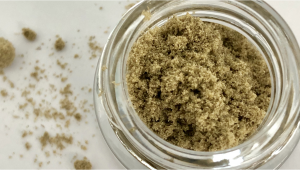
- 1. What is dry sift?
- 2. The types of trichomes found in cannabis
- 3. The pros and cons of dry sift
- 3. a. Quality
- 3. b. Yield
- 3. c. Practicality
- 3. d. Cost
- 4. How to make dry sift step-by-step
- 4. a. Step 1
- 4. b. Step 2
- 4. c. Step 3
- 4. d. Step 4
- 5. How to press your dry sift into hash blocks
- 6. How to store dry sift
- 7. In conclusion
Making dry sift is a great way of preserving resin after you’ve harvested your cannabis plants. Kief has been consumed for thousands of years and has come a long way; Making dry sift is a simple process that consists of filtering the trichomes from the buds with screens and collecting the resin into a jar before consumption. Although not an extract, this concentrate is one of the best beginner-friendly methods of experiencing a more potent cannabis high. It requires no high-tech machines, no chemical solvents, and very little effort! Making kief essentially separates the part of a cannabis flower that gets you high, from the parts that don’t, such as leaf tissue.
This ultimately results in a concentrated form of trichomes that provide much more of a punch. You can sprinkle them into joints and bongs alongside standard flowers for a more potent effect, or simply fire them up alone in pipes or vapes to enjoy a more intense experience and a superior taste of terpenes. In this article, you’ll learn the best way to make kief and a couple of tips to avoid wasting precious trichomes when growing cannabis seeds.
1. What Is Dry Sift?
Dry sift (aka Kief) is a cannabis concentrate made up of the trichome glands that grow on the buds, and sometimes surrounding foliage of the cannabis plants. These trichomes produce and store the terpenes and cannabinoids, and have a rounded shape so this product exhibits a soft sand-like appearance due to the trichome heads being whole when isolated. If you’ve ever noticed that sparkly, frosty coating on the surface of your buds, then you’ve certainly seen trichomes before! They don’t seem like much to the naked eye but close up, these mushroom-shaped glands become a lot more interesting!
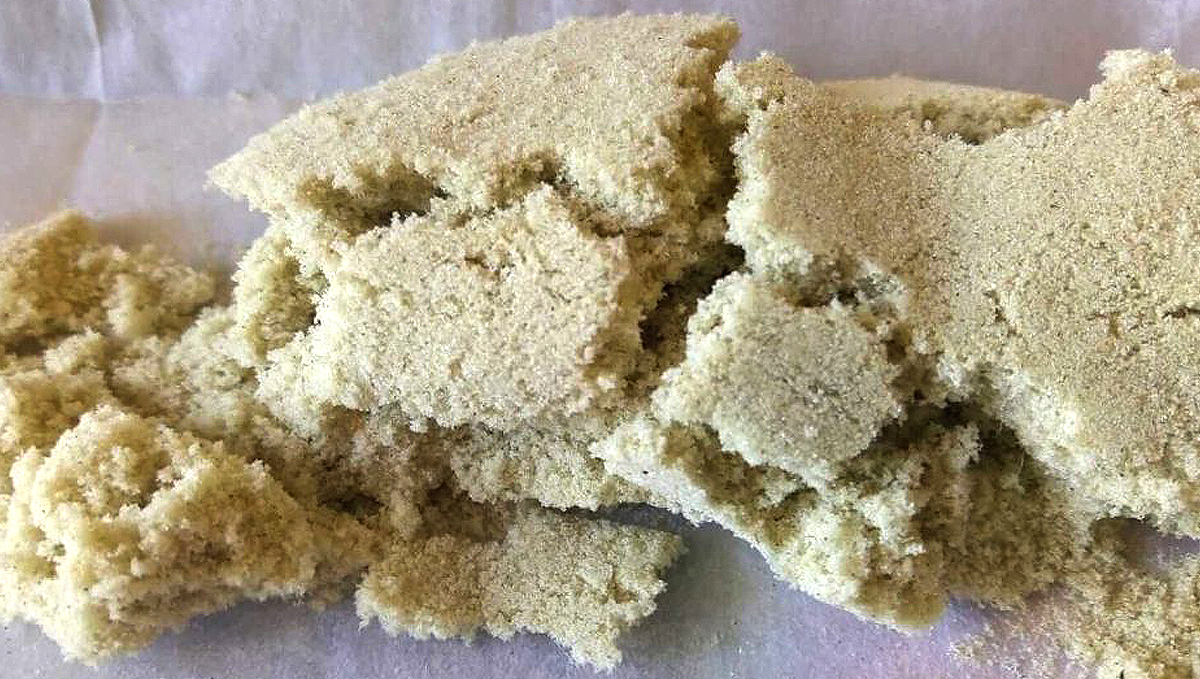
They feature disc cells in the bulbous tip of their stalks that biosynthesize THC, CBD, CBG, and many other cannabinoids and terpenes. These molecules are the very substances that underpin the effects, tastes, and aromas of each individual cannabis strain. Now you can see the benefits of isolating trichomes in the form of kief and firing them up! This product is a concentrate and not considered an extraction because the trichome glands are extracted whole and without the use of solvents, so usually, the final products contain more of the compounds you would look for when consuming any of these cannabis products.
Now, this product can be made in several ways and with lots of different equipment, for example, commercial manufacturers use vibratory sieves which contain filter screens with different sizes that correspond to the different sizes of the trichome glands, making it possible to separate the trichomes by size while leaving all the plant material behind.
Some at-home methods are:
- Use a high-quality trim tray that has a micro-mesh filter screen while you trim your buds. These trays catch all the plant and excess material while letting only the trichomes pass through. You can collect a surprisingly large amount of dry sift this way that would otherwise be wasted, so we recommend always using a trim tray while you manicure those beautiful buds you have worked for months to grow.
- Bubble bags are another simple and easy way to harvest your dry sift. Sure, this isn't pure dry sift, but you do get very similar results.
These are a set of bags that sit inside each other like babushka dolls, with each one having a finer grade of the micron filter mesh. You simply chuck whatever product, usually the trim, add super cold or dry ice, and give the bags a good old shake-up. The different grades of mesh will catch different grades of trichomes.
2. The Types of Trichomes Found in Cannabis
Trichomes are fur-like protrusions that cover cannabis buds and sugar leaves. They are where most of the cannabinoids and terpenes are found, and what hash and other extractions are made of. To us humans, trichomes are an attractive and valuable source of plant phytochemicals. However, they actually serve as defence mechanisms against a wide range of predators, from small insects to large herbivorous mammals. Not only do terpenes and cannabinoids act as chemical warfare agents that drive away insects, but they help to shield plants against forms of abiotic (non-living) stress, such as the UV rays of the sun. There are 3 main types of trichomes found on cannabis plants:
Capitate-stalked trichomes
These are the largest trichomes found on weed plants, measure between 50-100 microns wide and 200-300 microns tall. These are large enough to see with the aid of a magnifier, and the ones most of us stoners think of when someone mentions trichomes. They are also referred to as Glandular Trichomes and resemble mini-mushrooms. These trichomes make the highest quality hash.
Capitate-sessile trichomes
Similar to the Capitate-stalked trichomes, these are slightly smaller widths of around 20-30 microns and no stalk.
Bulbous trichomes
The smallest of all the trichomes. They can be as diminutive as 10 microns wide, a fraction of the size of Capitate-stalked trichomes. They sit on the surface of the plant and are thought to offer protection from pests, wind, and rain.
If you are looking for a strain that has huge trichome production potential, check out our Gorilla Punch Auto and Strawberry Gorilla Auto seeds. All come from the Gorilla Glue genetic line, which not only has some of the highest THC percentages ever tested, but also produces ridiculous amounts of resin - perfect for dry sifting!
3. The Pros And Cons Of Dry Sift
When talking about making concentrates, there are a couple of techniques with different levels of difficulty, yields, practicality, and cost. So the best one may depend on why you’re making it and your experience, but in general, dry sift is considered the easiest one and requires little to no experience to successfully isolate the trichomes from the plant material.
| Dry Sift | Water Hash | |
|---|---|---|
| Quality | More impurities depending on how it’s done. | Less impurities when done correctly. |
| Yield | Easier to lose trichomes, lower yield. | Harder to lose trichomes, higher yields. |
| Practicality | Easy to do, don’t need experience at all. | Hard to do, needs equipment and experience. |
| Initial Cost | Cheap, ranging from $50-$200. | Expensive, ranging from $200-$500. |
But as you may know, all methods have their own pros and cons so here we’ll be comparing Dry sifting to Water hash which is one of the most common hash-making methods, here are a couple of things you should have in mind.
Quality
If you’re looking for a way to make the best hash possible, then dry sift isn’t the way to go. Water hash, for example, is a more refined process than dry sift and results in a better product because you are filtering impurities more than once, with water and a filter screen.
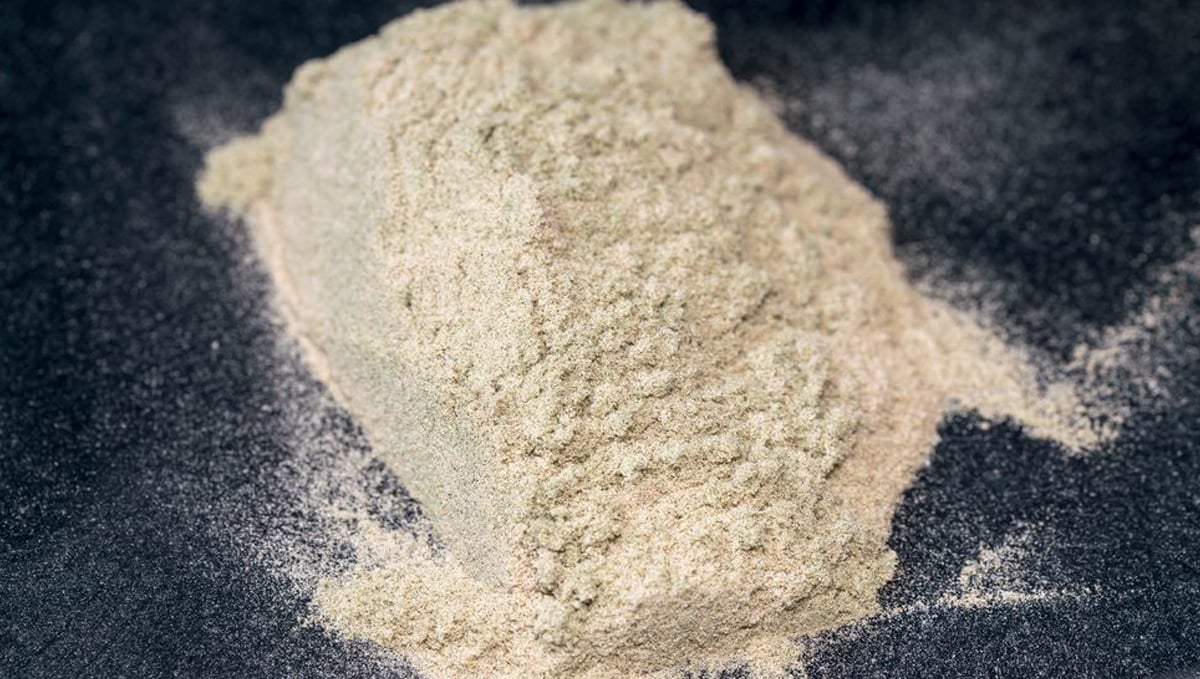
This doesn’t mean that you cannot make high-quality dry sift but usually kief is used to make rosin. So if you’re looking to make six star full melt hash, dry sift isn’t the ideal technique.
Remember that the quality of the plant material going it will be the quality of the product coming out so you have to start with good flower to make good hash.
Yield
When making water hash, for example, you will use multiple filter bags of different sizes at a time so you will be able to collect almost all trichomes, independent of their size.
But, usually, when dry sifting you have to select one filter screen size at a time, nowadays there are filter screens that can be used together but in general, you have to filter with one micron size at a time so you will have to choose between yields and quality, resulting in either a lower yield or lower quality.
Practicality
Now, if you’re looking for the easiest way to make hash, dry sift is what you’re looking for. Dry sifting is way more simple than making water hash, you can make kief anywhere, with almost no equipment and with little to no experience.

This process is quite fast, depending on how you do it it may take less than 20 minutes while making water hash requires special equipment, a lot of water, ice, and knowledge. Also, water hash takes a lot of time because you will still have to dry the final product, whereas kief will be ready to consume right after collecting it.
Cost
When talking about initial cost, dry sift takes the cake; It doesn’t matter if you’re making it at home or you’re a commercial grower, to make water hash properly you will need expensive equipment and quite a bit of knowledge if you want to make the most out of your plant material and equipment.
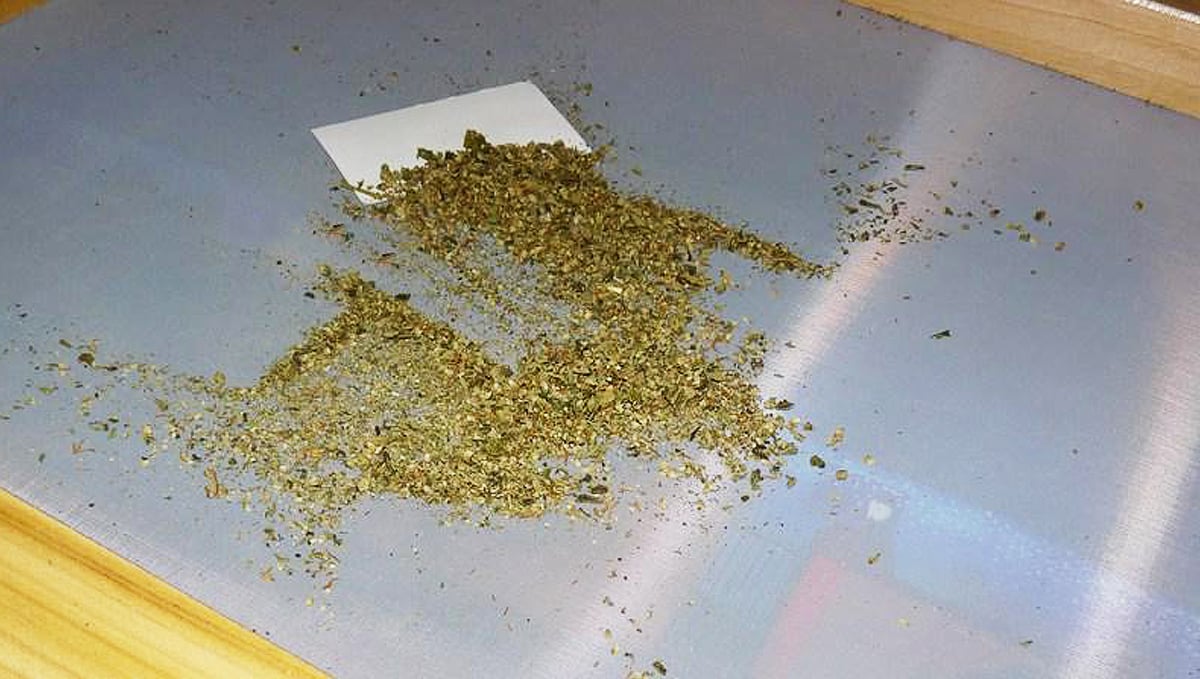
But making dry sift is inexpensive, not hard at all, and super fast so if you’re a home grower you can make good-quality kief without spending a lot of money.
Have in mind that neither of these methods is better than the other, both of them have their pros and cons, and are better suited for different scenarios. For most home growers, dry sift is the way to go due to being cheap and easy; Obviously, as you gather the knowledge you may want to buy better equipment and migrate to water hash but for most consumers, dry sift will do it.
4. How To Make Dry Sift Step-By-Step
So know that you know why make dry sift, you might be asking yourself How do I make dry sift? Well, read along for our step by step guide!
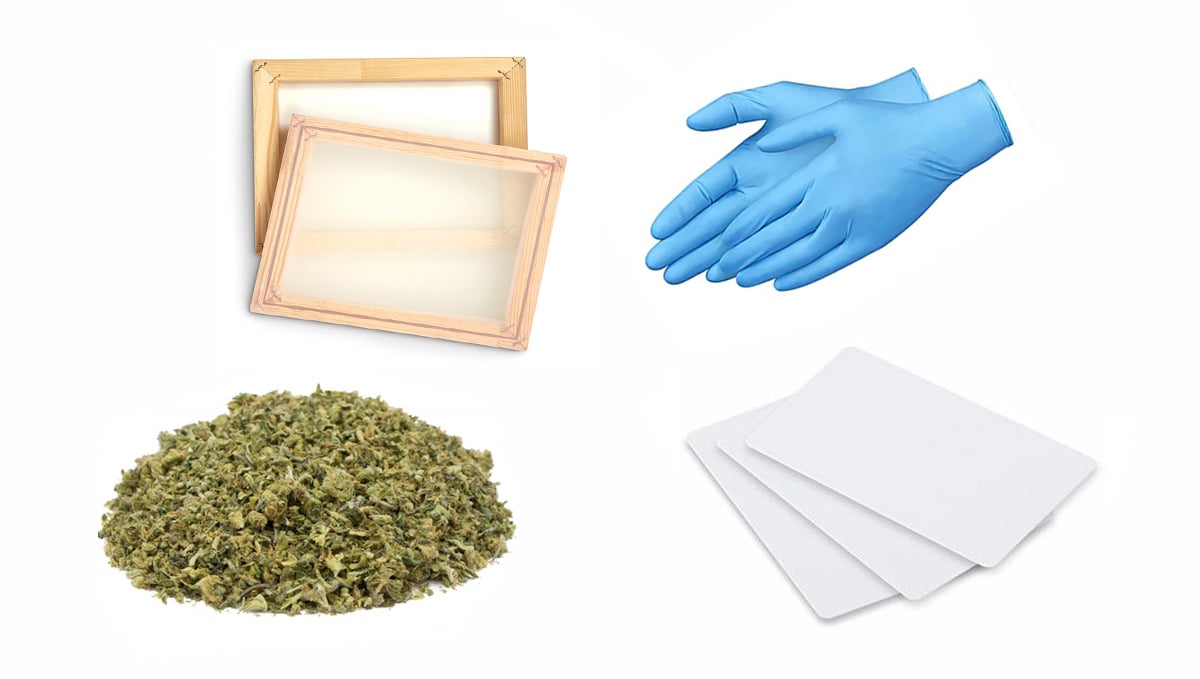
You’ll need:
- A clean surface, preferably a glass table;
- Dry sift filter screens (dry sift screen/sifting screen);
- Cannabis trims or cured flowers;
- Gloves;
- A plastic card (credit card, ID, or anything similar).
Step 1
Clean the glass surface with ethyl alcohol and let it dry, make sure you use paper towels to clean it so you don’t leave any fibers.
Also, it’s extremely important you clean the filter screen and make sure there are no particles stuck in it because it’s likely they will be in your final product.
Step 2
Place the trims or cured flower onto the screen, make sure the entire area of the screen is covered and that all the plant material is in contact with the screen.
Step 3
Gently press and roll the plant material with your hands for 30-120 seconds, most of the ripe trichomes will make pass through the screen.
To avoid having plant material in your final product you can also shake the screen from side to side and up or down, making the plant material bounce off the screen.

After you’ve done this, you can go ahead and take a look at the glass surface which should be covered with kief.
Have in mind that the largest trichomes will fall easily but the smaller ones may not so you will have to shake or press a bit more to remove as much as you can.
It’s essential you find that sweet spot between time sifting and force used because plant material in your end product can lead to mold.
Step 4
After you’ve finished processing your plant material, you can use a plastic card to scrape the kief and collect it into a glass jar or any glass container.
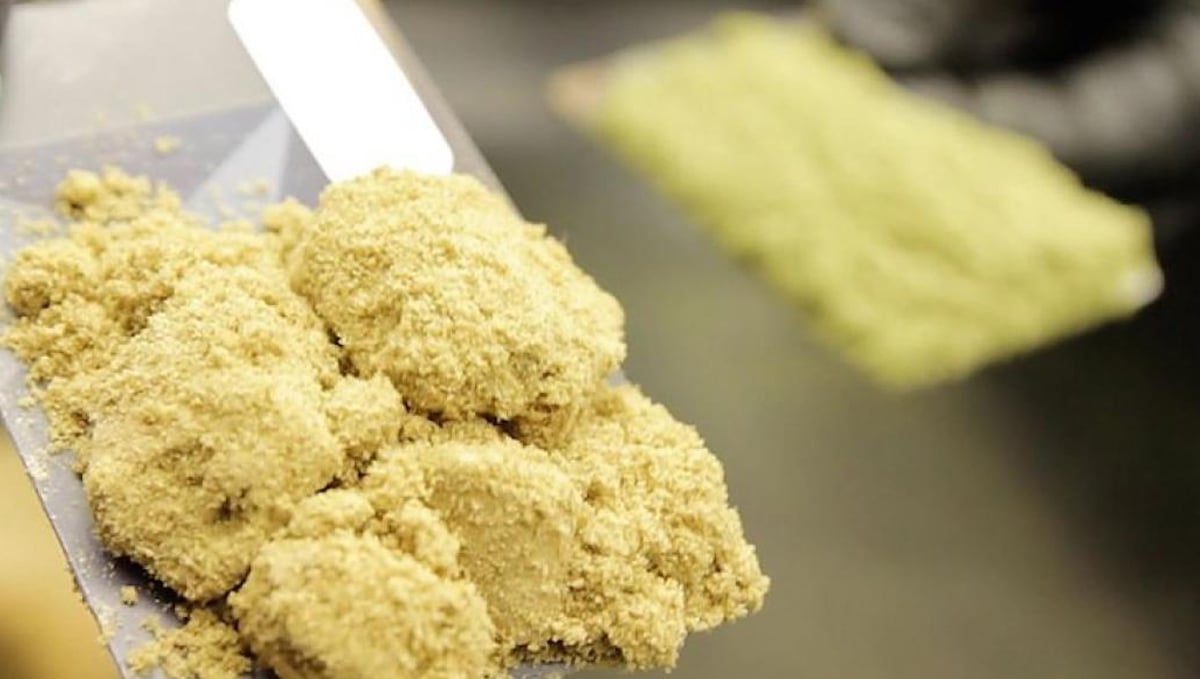
Remember that you can use different filter screens to separate dry sift into different grades and also, have in mind that you can process the same plant material up to 4 times, obviously, the quality will be lower every time but we recommend processing your plant material until there are no visible trichomes.
5. How to Press Your Dry Sift Into Hash Blocks
Now that you have harvested and collected all of that golden goodness, it's time to decide exactly what you want to do with it. You can sprinkle it directly into your joints or on top of your bowls, and use it to make delicious edibles, but we reckon pressing it into hash blocks is the perfect option for most new dry shifters.
These days pollen press machines are a dime a dozen and can be found everywhere. Once you have grabbed a pollen press, simply add a couple of card fulls of the dry sift and start turning that screw. Make sure not to overfill the press, as to much sry sift will result in a crumbly and uneven block of hash
6. How To Store Dry Sift
Usually, kief is worked (by applying pressure and heat) to get a more hashy consistency, making it possible to store in silicone containers or parchment paper but if you want to store it as kief, it’s better to store it in glass containers.
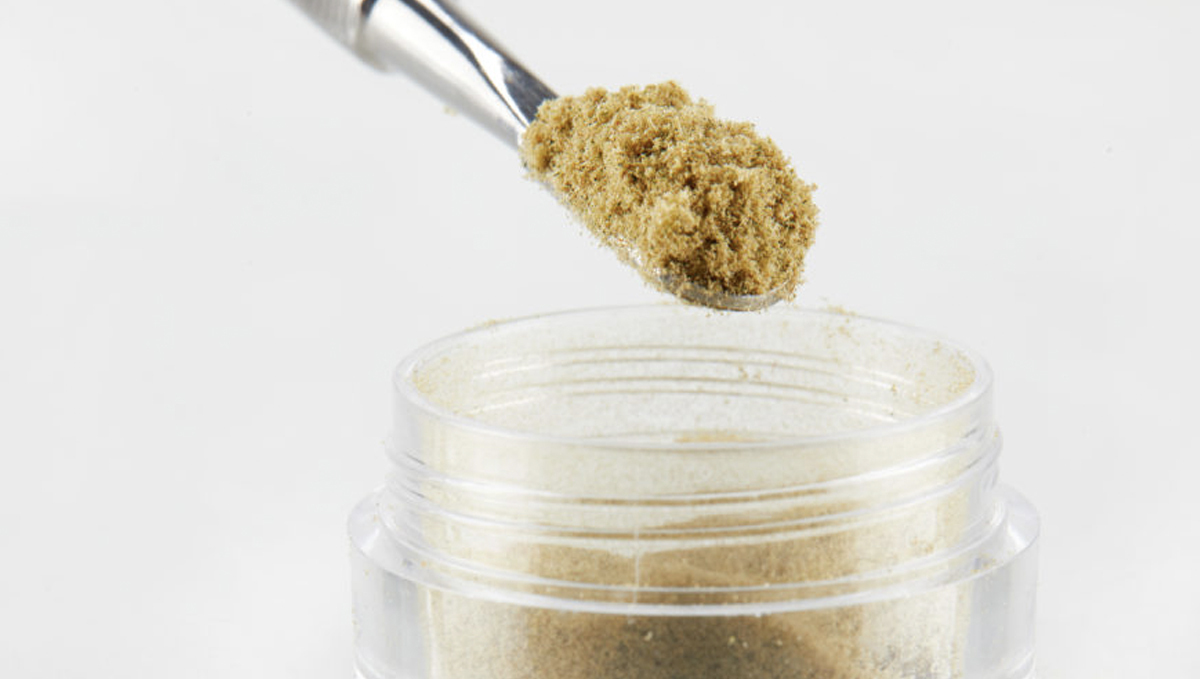
And, if you’re planning on storing it for long, you should keep it in a vacuum-sealed Ziploc inside a glass jar in the fridge, this will avoid mold and keep it fresh for months. Oxygen, heat, and high humidity levels are the 3 most common factors that can turn your favorite golden powder into crap, so whatever you do - keep your dry sift as well protected from these 3 things as humanly possible.
7. In Conclusion
Dry sift is a great way to enjoy a more potent high when growing your own cannabis, dry sift (kief) can be turned into whatever you want, you can make rosin or hash and smoke your buds in several different ways. But if you wanna keep it simple and don’t spend a lot of money, kief is a great way to smoke resin because it can be smoked in joints, bongs, blunts, or whatever you prefer.
If you know some extra tips and tricks for fellow growers who have just started adventuring in the world of concentrates, please leave a comment in the common section below!








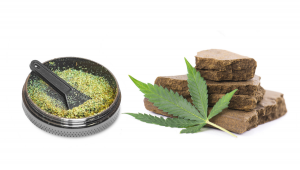



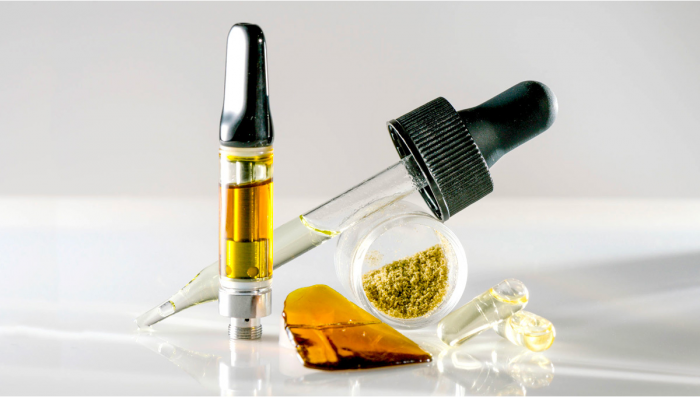
Comments